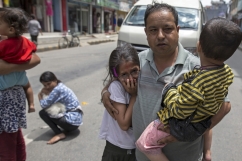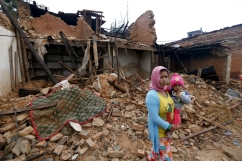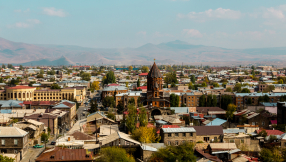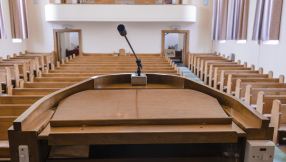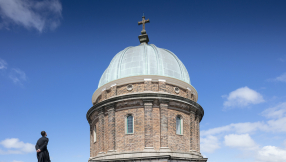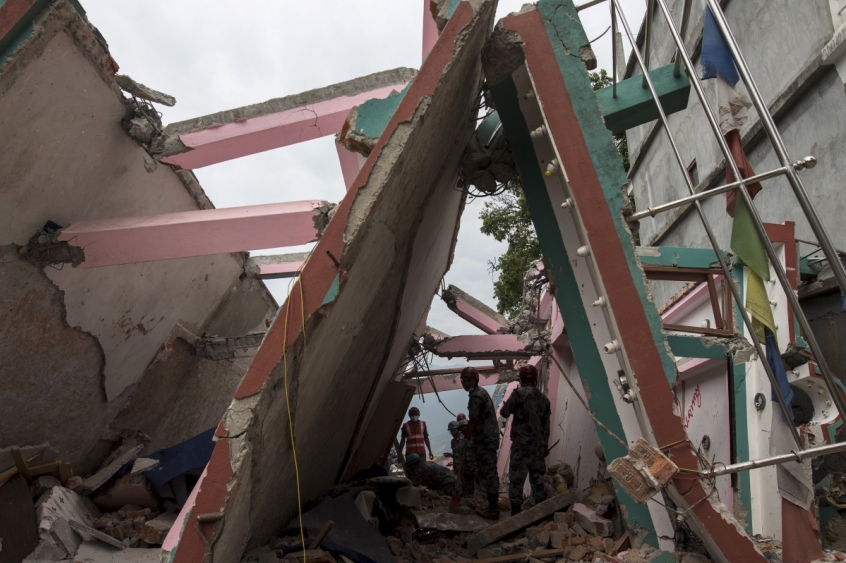
Nepali tea shop owner Phurba Sherpa has spent four nights cramped under a tarpaulin with his wife and nine others on a school field outside Kathmandu since falling rocks triggered by an earthquake last week demolished his distant mountain village.
The Nepali government is struggling to provide shelter for more than a million people like Sherpa who were uprooted by two massive earthquakes, first on April 25 and then 17 days later.
Tens of thousands are sleeping in the open, with monsoon rains possibly little more than a fortnight away.
"I lost everything – my house, tea house and all that I owned. I am a refugee in my own country now," said the 28-year-old, one of about 120 people who made the 110-km (70 miles) trip from Tatopani, a village on the Chinese border, to the town of Thali near the capital, Kathmandu.
Sherpa said he left his village after the second quake triggered landslides that left almost no space for shelter.
"We don't have any place to go and this is not enough when it starts raining," said Sherpa, who shared the cost of the blue-and-yellow plastic sheet with three other families.
Parts of Nepal have returned to relative normality since the quakes. Shops have reopened in Kathmandu, farmers are back in their fields and power lines are being reconnected.
But families such as Sherpa's making do under plastic sheets are a visible reminder of how much authorities need to do almost a month after the first quake struck. More than 8,600 were killed in Nepal's worst natural disaster on record.
Aid organizations worry about the possible spread of disease and the risk of further displacement in a country ill-equipped to help those most in need.
Nepal's government has raised $70 million of the $200 million it needs to give shelter and medical help to see the homeless through the monsoon before more permanent reconstruction work can begin.
EXPOSED TO THE ELEMENTS
The situation in Thali is mirrored across dozens of settlements throughout the Kathmandu valley and in Himalayan hamlets where the ability of state and non-government aid groups to help will be even more limited when the rains arrive.
"You will have villages that are completely cut off. The monsoon is going to change the game," said Natasha Reyes, head of Medecins Sans Frontieres' Nepal Mission.
She said downpours washing through camps could cause a rise in diarrhoea and respiratory tract illnesses, as well as cutting off remote areas from further help.
"These people are exposed to the elements. The pressure is really on," she said.
Working out of a tent in the grounds of the quake-damaged central government complex, the man in charge of the rescue and relief operation said a government fund would provide each homeless family with two bundles of corrugated iron roofing to build structures that can better withstand the three months of downpours that begin as early as June 1.
However, Nepal can only produce 8,000 bundles a day, said National Planning Commission vice-chairman Govind Raj Pokharel. It also lacks the diggers, excavators and cranes needed to clear rubble and make space for better temporary housing.
"Our production is limited. We need to procure from neighboring countries. We have approached them for help," Pokharel said.
Back in Thali, residents help new arrivals draw water at the school under overcast skies. The school has told them they must be off its land by the time it reopens at the start of June.
Kumar Pariyar, 85, arrived on Monday. Visibly weak, he said Thali was the fourth place he had been moved to since last week's quake destroyed his house.
"I came here because my relatives are here. But I don't know where to go as everything I had was destroyed in the earthquake and landslide. Maybe I have to live here until I die," he said.










